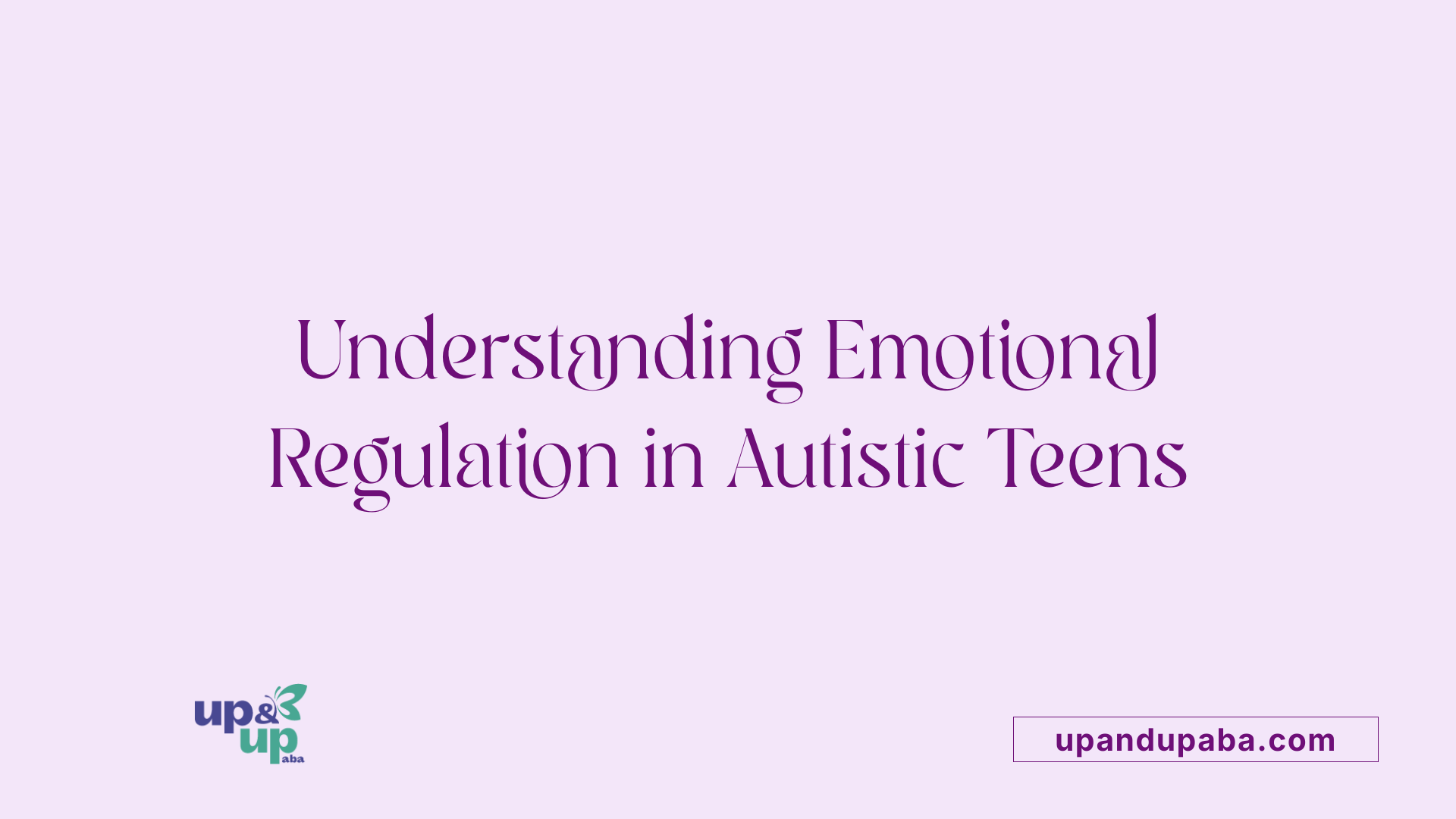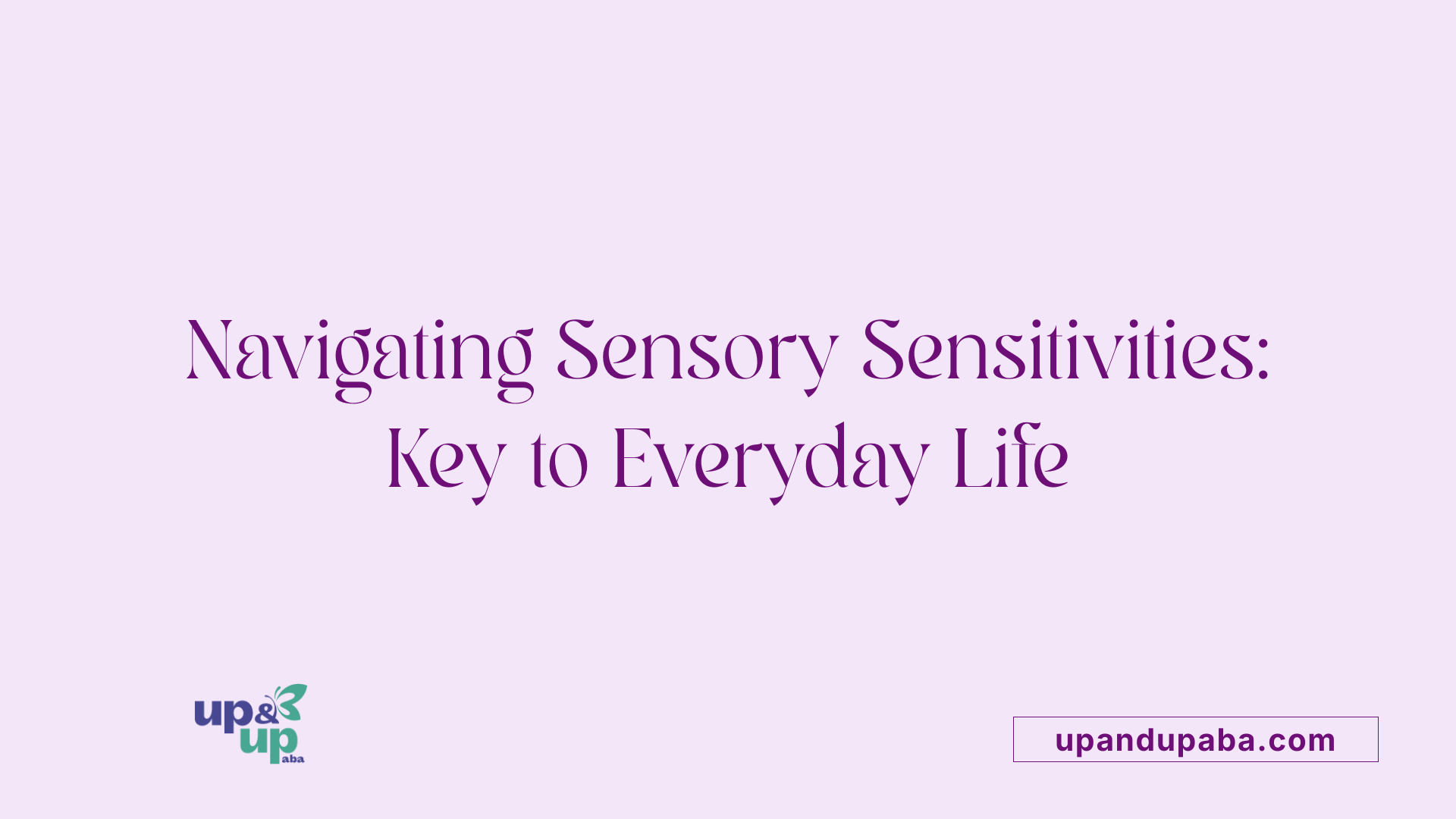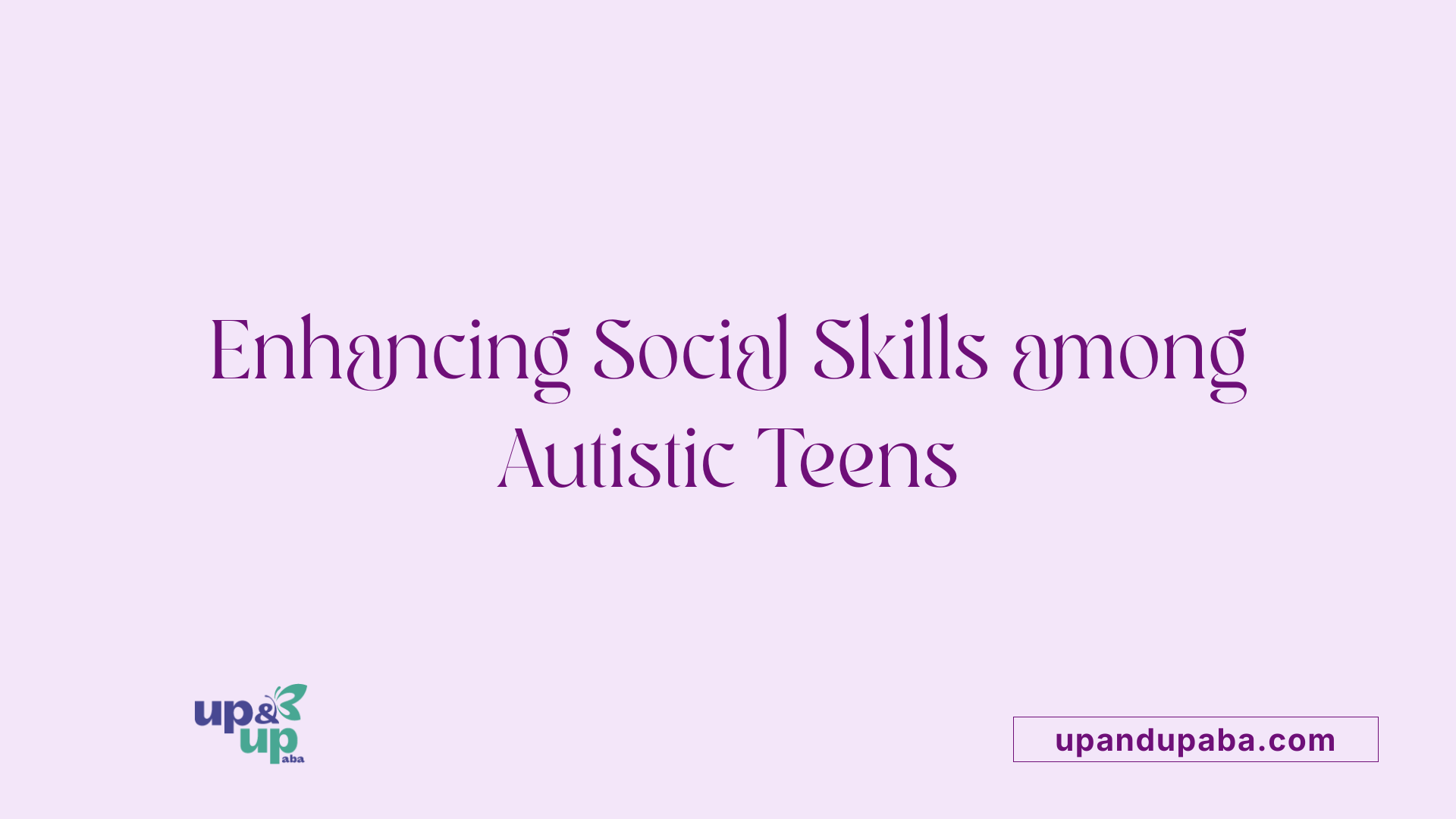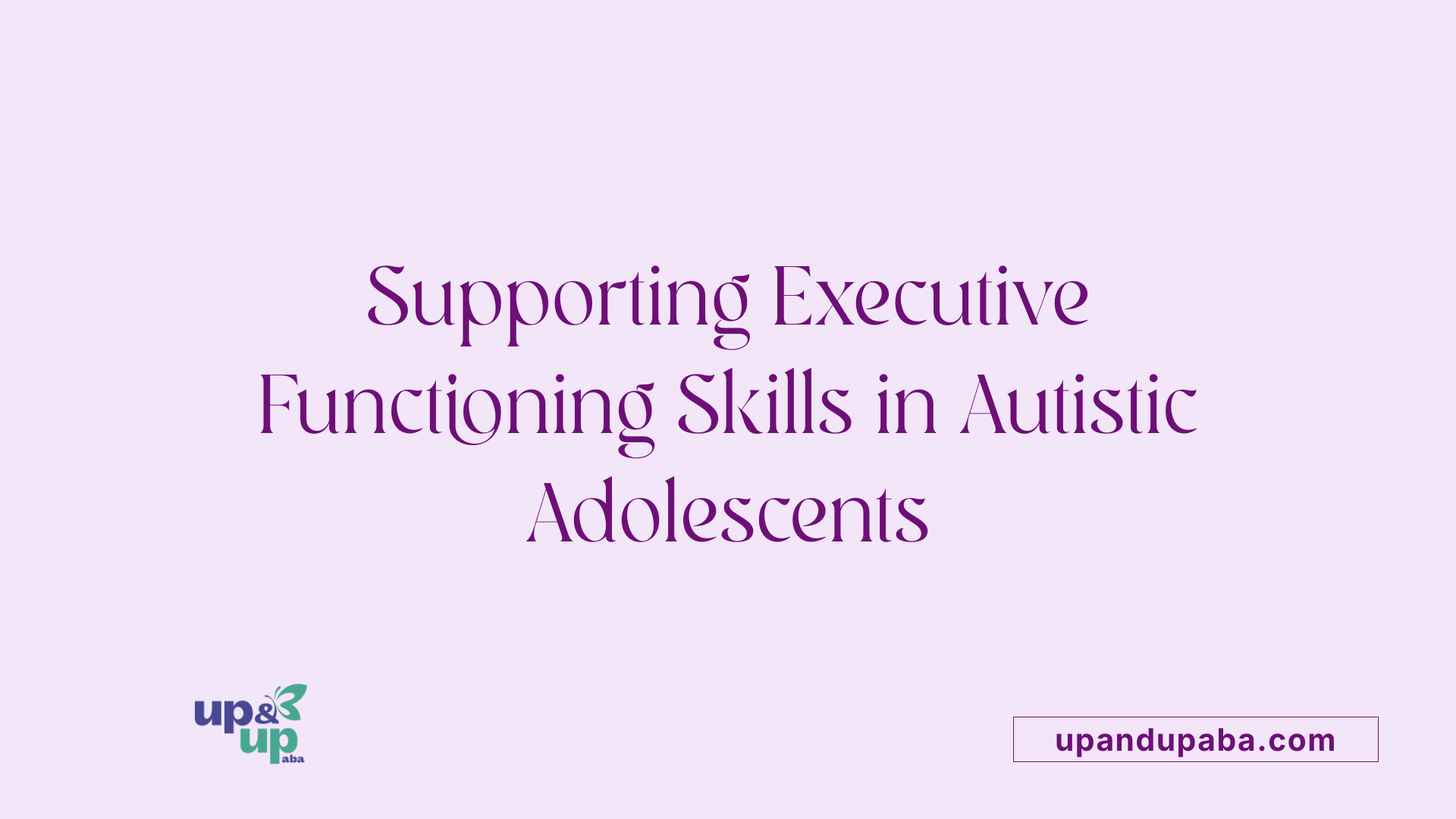Autism Challenges in Adolescence
Navigating the Teen Years with Autism

Introduction
Adolescence is a pivotal period of physical, emotional, and social development, profoundly impacting all teens. For individuals on the autism spectrum, these changes can be particularly challenging, as they navigate the complexities of teenage life compounded by unique sensory and social needs. This article delves into the diverse challenges faced by autistic adolescents, providing an understanding of their difficulties, and exploring strategies to support them.
Emotional Challenges and Regulation

Emotional Dysregulation in Autistic Teens
Autistic teenagers often experience intense emotional states that can result in emotional dysregulation. Their heightened sensitivity to external stimuli—such as noises and lights—can exacerbate feelings of anxiety and stress. This emotional volatility may stem from difficulties in understanding and expressing their emotions, often compounded by alexithymia, a condition affecting a significant percentage of individuals with autism.
Common Emotional Challenges Include Anxiety and Depression
Studies reveal that anxiety and depression are prevalent among adolescents with autism. Research shows that approximately 50% of autistic youth meet criteria for an anxiety disorder, leading to significantly compromised social skills and increased risk of bullying. Mood disorders are common, with around 39% diagnosed with anxiety disorders.
The emotional changes during puberty can exacerbate existing conditions, presenting new challenges with self-regulation, peer pressure, and social navigation. The interplay of these factors often results in feelings of isolation and loneliness, making it vital to recognize and address these emotional challenges early on.
Strategies for Emotional Support
To support autistic teenagers in managing their emotional challenges, several strategies can be beneficial:
- Structured Environments: Creating predictable and structured settings can provide a sense of security.
- Emotional Literacy Training: Teaching emotional awareness can aid in recognizing and articulating feelings better.
- Social Skills Training: Direct instruction on social interactions can enhance their ability to engage with peers.
- Mindfulness and Coping Techniques: Activities like mindfulness and yoga can help them manage anxiety and emotional dysregulation more effectively.
By implementing these strategies, caregivers and educators can foster an environment that promotes emotional well-being and helps autistic teens navigate their unique challenges during adolescence.
The Impact of Sensory Experiences

Sensory sensitivities among autistic teens
Sensory sensitivities are a hallmark of autism, and they can significantly disrupt the daily lives of autistic teenagers. Common challenges include hypersensitivity to certain sounds, lights, and textures. For instance, a noisy classroom or flickering fluorescent lights can become overwhelming, leading to emotional distress and difficulty concentrating. This sensory overload can trigger meltdowns or withdrawal, making school and social environments particularly challenging.
How sensory overload affects daily life
Daily life for autistic teens often revolves around navigating these sensory challenges. Symptoms might include:
- Increased anxiety: Overwhelming environments contribute to heightened stress.
- Emotional dysregulation: Sensory overload can lead to meltdowns or severe mood swings.
- Social withdrawal: Many teens prefer to avoid social situations altogether to escape sensory discomfort.
These factors can exacerbate feelings of isolation and tension within peer relationships.
Managing sensory challenges
Strategies for managing sensory overload are crucial in supporting autistic teenagers. Some effective approaches include:
| Strategy | Description | Benefits |
|---|---|---|
| Sensory-friendly spaces | Creating calm areas where teens can retreat during overwhelming moments | Reduces anxiety and restores calm |
| Predictable routines | Establishing clear routines helps autistic teens anticipate changes, minimizing stress | Enhances emotional security |
| Fidget tools | Providing items that help redirect focus during sensory overload can aid concentration | Promotes engagement and focus |
Incorporating these strategies can help autistic teens better navigate their sensory experiences and improve their overall quality of life.
Navigating Social Interactions

Social challenges in adolescence for those with autism
Adolescence can be a particularly difficult time for teens with autism, as they navigate significant physical, emotional, and social changes. The desire for connection often collides with their unique social vulnerabilities. Autistic teens frequently face bullying and rejection, leading to irritability and social avoidance as coping mechanisms. Research indicates that around 50% of youth with autism do not engage in social activities outside school, which highlights their struggle with isolation despite a yearning for friendship.
The "double empathy problem" and its effects
The 'double empathy problem' exacerbates these difficulties. This term denotes the mutual misunderstanding between autistic individuals and neurotypical peers, wherein both groups fail to comprehend each other's social cues and communication styles. This misunderstanding can deepen feelings of loneliness and frustration in autistic teens, making it even harder for them to connect with their peers.
Strategies for improving social skills
To enhance social skills, targeted interventions such as social skills training and structured support in educational settings are vital. These strategies help autistic teenagers learn the nuances of social interactions, from understanding non-verbal cues to initiating conversations. Moreover, facilitating open discussions about puberty and relationship-building will empower autistic youth to navigate these challenges with increased confidence. Equipping them with the right tools not only aids in social connections but also fosters a sense of belonging in a challenging developmental phase.
Executive Functioning and Behavioral Changes

Impact of adolescence on executive functioning
During adolescence, the brains of autistic teenagers undergo significant developmental changes, particularly affecting executive functioning. This area is responsible for regulating thoughts and actions, enabling the management of tasks, decision-making, and emotional control. Autistic teens may experience a slower development of these skills, leading to challenges in organization, planning, and task initiation. The impact of heightened academic and social demands during these years often exacerbates these difficulties, resulting in increased anxiety and stress as they struggle to keep pace with their neurotypical peers.
Behavioral issues related to executive functioning deficits
The deficits in executive functioning can manifest as behavioral issues, including impulsive actions and emotional dysregulation. Teenagers may have trouble following routines, which can lead to frustration and tantrums. Additionally, struggles with social cues mean that situations that seem minor to others can trigger meltdowns. The combination of anxiety about social interactions, sensory overload, and rigid thinking patterns can result in a challenging emotional landscape, further complicating their ability to interact effectively with peers and manage day-to-day activities.
Interventions for behavioral support
To effectively support autistic teenagers, parents and caregivers can implement targeted interventions. Here are some strategies:
- Safe Space: Create a calming environment for the teen to retreat to during overwhelming moments.
- Recognize Triggers: Identify and manage potential stressors before they escalate.
- Routine Establishment: Implementing a consistent daily routine can provide structure and reduce anxiety.
- Coping Techniques: Teach techniques like deep breathing and sensory tools to help the teenager de-escalate.
- Calm Communication: During meltdowns, maintain a composed presence and minimize verbal communication to avoid further stress.
By fostering a supportive atmosphere and using these strategies, parents and caregivers can better help autistic teens navigate the complexities of adolescence and improve their emotional regulation and executive functioning skills.
Puberty and Personal Hygiene Challenges
The challenges of puberty for autistic teenagers
Autistic teenagers face unique difficulties during puberty, which encompasses a range of physical, emotional, and social changes. As they navigate this transition, they may need explicit guidance about bodily changes, which are often not acquired naturally from peers. This lack of information can create confusion and anxiety, especially regarding sexual health and personal care routines.
Addressing personal hygiene concerns
Maintaining personal hygiene can be particularly challenging for many autistic teenagers. Factors such as sensory sensitivities and difficulties in understanding social norms often contribute to reluctance in engaging in routine self-care. Providing structured guidance and patience can help promote good personal hygiene habits. Parents and caregivers can facilitate this process by creating a consistent schedule for personal care tasks, preparing checklists, and using visual aids to support understanding.
Adapting to physical and emotional changes
The onset of puberty also intensifies emotional regulation issues. Autistic teenagers may experience heightened anxiety and emotional responses, which can affect their interactions with peers. Support strategies include offering clear, direct discussions about the changes they are experiencing and creating spaces where they can express their feelings without judgment. By fostering open communication and understanding, caregivers can help them adapt successfully to these changes.
How can people effectively communicate with an autistic teenager?
To effectively communicate with an autistic teenager, it's important to allow them to express their thoughts fully without interruptions, which helps them process their feelings. Utilizing clear and literal language, while avoiding sarcasm, can enhance understanding. Show emotional cues like smiling to convey openness and friendliness, and engage them by discussing their hobbies and interests. Maintain a calm demeanor and be attentive to their signs of attention, making sure to ask questions concisely. Finally, empower them by encouraging their own calming strategies for managing emotions, fostering a positive communication environment.
Challenges Overview
| Challenge | Description | Impact |
|---|---|---|
| Sexual education | Lack of information can lead to confusion and anxiety regarding bodily changes. | Increased stress and isolation |
| Personal hygiene issues | Sensory sensitivities hinder routine self-care practices. | Social stigma and peer rejection |
| Emotional regulation | Heightened emotional responses complicate interactions. | Strained peer relationships |
| Communication difficulties | Challenges in processing language can impede discussions on sensitive topics. | Misunderstandings and isolation |
This table summarizes some of the major challenges autistic teenagers encounter during puberty, along with their implications.
Co-occurring Conditions: Anxiety and ADHD
Prevalence of Anxiety and ADHD in Autistic Adolescents
Adolescents with Autism Spectrum Disorder (ASD) frequently experience co-occurring mental health conditions such as anxiety and Attention-Deficit/Hyperactivity Disorder (ADHD). Research shows that around 50% of youth with autism meet the criteria for an anxiety disorder, highlighting the significant overlap between these conditions. Furthermore, those with both autism and ADHD often face compounded challenges, affecting their overall social functioning and emotional well-being.
Impact of Co-occurring Conditions on Mental Health and Social Skills
The combination of anxiety and ADHD in autistic teenagers can lead to increased vulnerability to negative social outcomes, such as loneliness, depression, and social isolation. These adolescents tend to have heightened difficulties in navigating social environments. Elevated anxiety levels may contribute to less assertiveness, making it hard for them to communicate effectively and engage in social interactions. As a result, they often experience greater challenges in building friendships, which can exacerbate feelings of exclusion and emotional distress.
Support Strategies for Managing Co-occurring Conditions
To assist adolescents dealing with anxiety and ADHD alongside autism, tailored support strategies are essential. Here are effective approaches:
- Structured Environments: Create consistent routines that reduce unpredictability and provide a sense of security.
- Social Skills Training: Offer direct instruction in understanding social cues and norms to improve peer interactions.
- Emotional Regulation Strategies: Teach coping mechanisms such as mindfulness and relaxation techniques to manage anxiety symptoms.
- Open Communication: Facilitate discussions about feelings and experiences to encourage self-expression and understanding.
Implementing these strategies can help autistic teenagers with anxiety and ADHD navigate the complexities of adolescence more successfully.
Tailored Support for Parents and Caregivers
Importance of tailored support for families
Supporting autistic teenagers requires a nuanced understanding of the unique challenges they face. Puberty, social pressures, and academic demands can amplify the difficulties associated with autism. Tailored support helps families navigate these challenges effectively and fosters a more supportive environment for autistic teens.
Available resources and strategies for parents
Parents can access a variety of resources to help them support their teenagers:
- Social Skills Training: Programs that focus on developing communication and social interaction skills can provide significant benefits.
- Behavioral Therapy: Applied Behavior Analysis (ABA) therapy can help teens learn daily living skills and appropriate social behaviors.
- Support Groups: Connecting with other families facing similar challenges can offer emotional support and practical advice.
- Educational Resources: Information about specific educational strategies and IEP modifications can aid parents in advocating for their children at school.
Helping teenagers transition smoothly into adulthood
As teens approach adulthood, guidance becomes vital. Parents should focus on:
- Life Skills Development: Teaching essential skills such as cooking, budgeting, and personal hygiene can foster independence.
- Career Planning Support: Engaging with vocational training resources can help teens prepare for the workforce.
- Open Communication: Maintaining dialogue about social expectations, relationships, and emotional well-being is crucial for their growth and adaptation.
These tailored approaches can significantly assist not only autistic teenagers but their families as well, creating a foundation for a successful transition into adulthood.
Educational and Employment Transitions
Challenges in Educational Settings for Autistic Teens
Many autistic teenagers face significant obstacles in educational settings. Executive functioning deficits can hinder their ability to organize tasks, manage time, and follow instructions, which often leads to frustration and poor academic performance. Additionally, the shift to middle and high school typically increases academic demands, requiring critical thinking and writing skills that may not align with their strengths. This disparity can lead to feelings of inadequacy and heighten anxiety.
Employment Support and Transition Strategies
Transitioning from education to employment poses unique challenges for autistic teenagers. Programs that offer social skills training, mentorship, and vocational support are crucial in helping them navigate the job market. Providing structured environments where they can learn essential workplace skills is beneficial. Collaboration between educators, parents, and community resources can help facilitate smoother transitions into the workforce.
Facing Unemployment and Higher Education Barriers
Autistic individuals are less likely to pursue higher education compared to their neurotypical peers, partially due to a lack of support and guidance. Many struggle with social dynamics in academic settings and face barriers to accessing necessary resources for academic success. Moreover, higher incidences of unemployment point to the importance of creating inclusive environments that cater to the unique needs of autistic individuals, enabling them to thrive in their chosen career paths.
Understanding High-Functioning Autism in Teens
Different experiences of high-functioning autistic adolescents
High-functioning autism (HFA) manifests uniquely among adolescents. These individuals often exhibit above-average intelligence and may demonstrate advanced skills in specific areas, yet they face significant challenges in social situations. Many high-functioning teens struggle with emotional regulation, leading to anxiety and depression, particularly during the tumultuous teenage years.
Social and communication challenges specific to high-functioning ASD
Teens with HFA frequently encounter difficulties with social interactions. They may misinterpret social cues, struggle to maintain eye contact, and have trouble understanding figurative language or sarcasm. Moreover, they can experience emotional overwhelm from social settings, which can lead to isolation and avoidance.
Strategies for recognizing symptoms in high-functioning teens
Identifying symptoms in high-functioning adolescents involves observing their social behavior and emotional responses. Look for signs like:
- Difficulty making friendships
- Overly literal interpretations of conversations
- Magnified emotional reactions to perceived social slights
Encouraging open dialogue and understanding of their specific needs can significantly improve the support they receive during this critical stage of development.
The Road to Adulthood: Preparing for the Future

Transition from Adolescence to Adulthood for Autistic Individuals
The transition from adolescence to adulthood can be especially daunting for individuals with Autism Spectrum Disorder (ASD). This phase is marked by increased expectations for independence and self-management. Autistic teens often require additional support to cope with the myriad changes they face, including shifts in social dynamics and the need for vocational skills.
Facing Challenges in Employment and Higher Education
Data indicates that autistic individuals are at a higher risk for unemployment and struggle to access higher education opportunities. Less than half of adolescents with ASD trend towards post-high school education, revealing a gap in available support services. Employment prospects can be hindered not only by skills deficits but also by challenges in social communication and understanding workplace expectations.
Long-term Support Strategies
To enhance successful transitions, it’s crucial to implement long-term support strategies tailored to each individual’s needs. These may include:
- Skill Building: Focused training in daily living skills, job coaching, and social interactions.
- Education Accommodations: Programs that facilitate academic learning in ways that match the learning profiles of autistic individuals.
- Consistency and Advocacy: Ongoing support from families and professionals to advocate for needs in both community and educational settings.
By prioritizing these strategies, we can empower autistic teens as they journey into adulthood.
Conclusion
Understanding the unique challenges faced by autistic adolescents is crucial for providing effective support. By recognizing their sensory sensitivities, social interactions, and executive functioning challenges, caregivers and educators can implement tailored strategies to assist these teens during a critical phase of their development. As we offer guidance and resources, we empower them to navigate their teenage years with greater confidence and prepare for the transition into adulthood. Ultimately, through empathy, support, and education, we can help ensure that autistic adolescents thrive, embracing their potential and contributing meaningfully to society.
References
- 10 challenges your autistic teenager likely faces every day
- Challenges Teens with Autism Face
- Autism Spectrum Disorder in Teenagers and Adults
- Teenage Years with Autism: Challenges and Milestones
- Autism in the Teen Years: What to Expect, How to Help
- Social difficulties in youth with autism with and without ...
- What to Know About Autism Spectrum Disorder in Teens
- Challenges Faced by Autistic Teenagers During Puberty
- Autism and Adolescence: For Many, the Most Challenging ...



